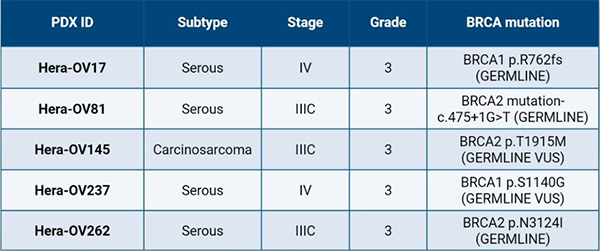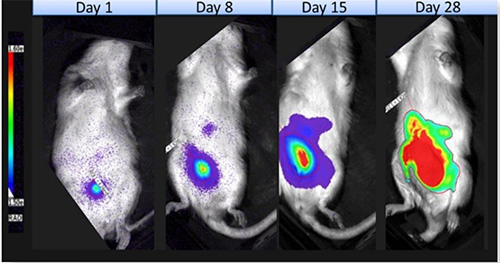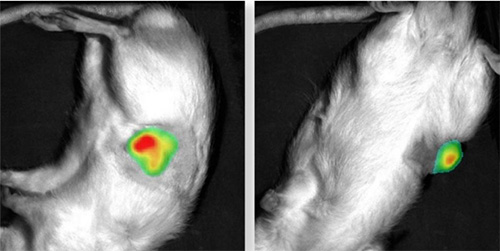Since its generation, the SRG OncoRat has enabled innovation while offering improved risk mitigation in preclinical research. The SRG, a SCID rat on the Sprague-Dawley background, harbors a double knockout for the Rag2 and Il2rγ genes. Similar to NSG mice, the SRG demonstrates enhanced immunodeficiency, lacking B-cells, T-cells, and NK-cells. Cell lines that grow robustly in immunocompromised mice also grow robustly in the SRG rat. Furthermore, cell lines with variable take rates and inconsistent growth in mice grow consistently better in the SRG Rat.
Because of its larger size, the SRG rat enables:
- Larger tumor volumes
- More frequent blood collection
- Greater ease of orthotopic inoculations
Because of its Sprague-Dawley background, the SRG rat allows toxicology, pharmacokinetics (PK), pharmacodynamics (PD), and efficacy studies all in the same animals, which cuts down on time and cost.
Other commercially available rat models, such as the Foxn1 Nude rat, are not as immunodeficient and therefore not as robust for tumor xenograft models.
Ovarian PDXs: Improving the Translational Power of Pre-Clinical Cancer Models
Hera and our collaborators have grown numerous cell lines in the SRG rat, including breast, colon, endometrial, glioblastoma, lymphoma, lung, non-small cell lung cancer, head and neck squamous cell carcinoma, ovarian, pancreatic, prostate, and renal cell carcinoma.
Patient-derived xenograft (PDX) tumor models have become increasingly popular by providing tumor architecture, stromal-vascular cells, and cell-cell interactions that closely mimic human tumors. As with cell-derived xenografts, PDX engraftment and growth rates are higher in the SRG rat than in mice. Thus, fewer passages are necessary to establish the PDX banks for downstream studies and characterization.
Hera now offers studies using five ovarian cancer PDXs (Figure 1), with whole-exome Seq, RNA Seq, and patient clinical characteristics data available upon request.

Figure 1: Summary Characteristics of Hera’s Ovarian PDXs
Ovarian Cancer PDXs and the SRG OncoRat
Hera has generated a cell line from the cisplatin-naïve PDX OV81 that has constitutive firefly luciferase expression (OV81.2-Luc). Compared to inoculations in mice, OV81.2-Luc has shown exceptional take rates and tumor growth in the SRG rat. Coupling these cells with our in vivo bioluminescent imaging using the AMI-HT from Spectral Imaging Instruments enables tracking of either orthotopic (Figure 1) or subcutaneous primary tumor growth (Figure 2).

Figure 2:This shows OV81.2-Luc ovarian cancer cells that were injected IP into SRG rats (N=3. 5 million cells/rat) and monitored for tumor growth for 28 days.

Figure 3: This shows AMI HT (Spectral Instruments Imaging) used for in vivo bioluminescence imaging. SRG OncoRats were given subcutaneous inoculations with 4 x 10⁶ luminescent cells and tumors grown for 5 weeks.
The SRG OncoRat: Preferred for Ovarian PDX Studies
Hera’s SRG OncoRat has shown exceptional take rates and tumor growth of ovarian PDX inoculations. The rat’s substantial immunodeficiency makes it ideal for growing a variety of cell lines and its Sprague-Dawley background enables its use for many different types of drug experiments.
Noto et al., 2020. The SRG rat, a Sprague-Dawley Rag2/Il2rg double-knockout validated for human tumor oncology studies. PLOS One. DOI.org/10.1371/journal/ pone.0240169.
